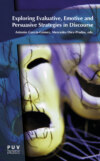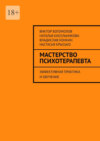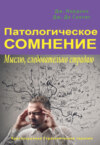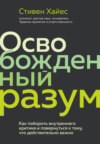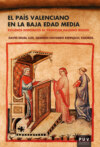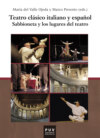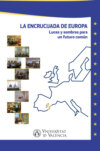Читать книгу: «Exploring evaluative, emotive and persuasive strategies in discourse», страница 4
Carretero, Marta and Juan Rafael Zamorano-Mansilla (2013). “Annotating English adverbials for the categories of epistemic modality and evidentiality”. In Marín-Arrese, Juana I., Marta Carretero, Jorge Arús Hita and Johan van der Auwera (eds.) English Modality: Core, Periphery and Evidentiality. Berlin / Boston: De Gruyter Mouton, pp. 317-355.
Hansen-Schirra, Silvia, Stella Neumann and Erich Steiner (2012). Cross-linguistic Corpora for the Study of Translations – Insights from the Language Pair English-German. Berlin: de Gruyter.
Langacker, Ronald W. (2009). Investigations in Cognitive Grammar. Berlin: Mouton de Gruyter.
Lavid, Julia, Jorge Arús, Bernard DeClerck, and Veronique Hoste (2015). “Creation of a high-quality, register-diversified parallel (English-Spanish) corpus for linguistic and computational investigations”. Procedia – Social and Behavioral Sciences 198, 249-256.
Lavid, Julia, Marta Carretero and Juan Rafael Zamorano Mansilla. (2016). “A linguistically-motivated annotation model of modality in English and Spanish: Insights from MULTINOT”. Linguistic Issues in Language Technology 14, 1-35.
Lavid, Julia, Marta Carretero and Juan Rafael Zamorano Mansilla (2017). “Epistemicity in English and Spanish: An annotation proposal”. In Marín-Arrese, Juan I., Julia Lavid-López, Marta Carretero, Elena Domínguez Romero, Mª Victoria Martín de la Rosa and María Pérez Blanco (eds.) Evidentiality and Modality in European Languages. Discourse-Pragmatic Perspectives. Bern: Peter Lang, pp. 241-276.
Lichtenberk, Frantisek (1995). “Apprehensional epistemics”. In Bybee, Joan and Suzanne Fleischman (eds.) Modality in Grammar and Discourse. Amsterdam: John Benjamins, pp. 293-327.
Marín-Arrese, Juana I. (2011). “Effective vs. epistemic stance and subjectivity in political discourse: Legitimising strategies and mystification of responsibility”. In Hart, Christopher (ed.) Critical Discourse Studies in Context and Cognition, ed. by Christopher Hart. Amsterdam / Philadelphia: John Benjamins, pp. 193-223.
Martin, James R., and Peter R. R. White. (2005). The Language of Evaluation. New York: Palgrave.
Mora, Natalia (2011). Annotating Expressions of Engagement in Online Book Reviews: A Contrastive (English-Spanish) Corpus Study for Computational Processing. MA Dissertation, Universidad Complutense de Madrid, available at http://eprints.ucm.es/13754/ (Accessed 27 December, 2017).
Nuyts, Jan (2001). Epistemic Modality, Language and Conceptualization. A Cognitive-pragmatic Perspective. Amsterdam / Philadelphia: John Benjamins.
Palmer, Frank R. (1990). Modality and the English Modals. London and New York: Longman.
Paulussen, Hans, Lieve Macken, Willy Vandeweghe, and Piet Desmet (2013). “Dutch parallel corpus: A balanced parallel corpus for Dutch-English and Dutch-French”. In Spyns, Peter and Jan Odijk (eds.) Essential Speech and Language Technology for Dutch. Springer: Cham, pp. 185-199.
Voloshinov, Valentin N. (1973). Marxism and the Philosophy of Language. (Translated by Ladislav Matejka and I.R. Titunik.). London: Seminar Press.
White, Peter R. R. (2002). “Appraisal”. In Östman, Jan-Ola and Jef Verschueren (eds.) Handbook of Pragmatics. Amsterdam / Philadelphia: John Benjamins, pp. 1-27.
White, Peter R. R. (2015). An Introductory Course in Appraisal Analysis. Retrieved at <http://www.grammatics.com/appraisal>, webpage updated December 27, 2015.
Appendix
References and URLs of the texts analysed:
EO_ESS_001: Joseph E. Stiglitz, “A Greek morality tale”, Project Syndicate, February 3, 2015.
EO_ESS_004: Laura Tyson and Saadia Zahidi, “The slow march to gender parity”, Project Syndicate, October 31, 2014.
EO_ESS_005: Michael J. Boskin, “A five-step plan for European prosperity”, Project Syndicate, February 25, 2015.
EO_ESS_006: J. Bradford DeLong, “Making Do with More”, Project Syndicate, February 26, 2015.
EO_ESS_009: Nouriel Roubini, “Where Will all the Workers Go”, Project Syndicate, December 31, 2014.
EO_EXP_001: Bill Bryson, “How to build a universe”. A Short History of Nearly Everything. (Fragment). New York: Doubleday, 2003
http://www.nytimes.com/2003/05/18/books/chapters/0518-1st-bryson.html?pagewanted=all
EO_EXP_002: Carl Sagan, Cosmos. (Fragment). New York: Random House, 1980.
EO_EXP_003: Richard Dawkins, The Selfish Gene, third edition. (Fragment). Oxford: Oxford University Press, 2006.
http://www.geoffwilkins.net/fragments/Dawkins.htm
EO_EXP_015: Roger Penrose, The Emperor’s New Mind: Concerning Computers, Minds and the Laws of Physics. (Fragment). Oxford: Oxford University Press, 1989.
EO_EXP_020: Steven Pinker, The Blank Slate. The Modern Denial of Human Nature. (Fragment). London: Penguin, 2002.
ETrans_ESS_001: Daniel Innerarity, “Nostalgia for quiet passions”, 2011, translated by Peter J. Hearn.
http://www.essayandscience.com/article/30/nostalgia-for-quietpassions/,
ETrans_ESS_002: Víctor Gómez Pin, “Redention and the Word”, 2009, translated by Mike Escárzaga.
http://www.essayandscience.com/article/2/redemption-and-the-word/
ETrans_ESS_003: José Álvarez Junco,”Machiavelli and the chosen people”, 2011, translated by Peter J. Hearn.
http://www.essayandscience.com/article/22/machiavelli-and-the-chosen-people/
ETrans_ESS_004: Javier Gomá Lanzón, “Unacknowledged geniuses do not exist”, 2010, translated by Jennifer Brooke Hoge.
http://www.essayandscience.com/article/4/unacknowledged-geniuses-do-not-exist/
ETrans_ESS_005: Rafael Argullol, “Catharsis and cure”, 2010, translated by Mike Escárzaga.
http://www.essayandscience.com/article/13/catharsis-and-cure/
ETrans_EXP_003, ETrans_EXP_004, ETrans_EXP_005, and ETrans_ EXP_016: Eduardo Galeano, Open Veins of Latin America. Five Centuries of the Pillage of a Continent. (Fragments).Translated by Cedric Belfrage. New York: Monthly Review Press, 1997.
ETrans_EXP_012: Eduardo Punset, The Happiness Trip: A Scientific Journey. (Fragment.) London: Chelsea Green, 2007.
SO_ESS_001: Daniel Innerarity, “Nostalgia de las pasiones tranquilas”, El País, August 31, 2011.
http://elpais.com/diario/2011/08/31/opinion/1314741604_850215.html
SO_ESS_002: Víctor Gómez Pin, “Redención y palabra”, March 1, 2009.
http://elpais.com/diario/2009/03/01/opinion/1235862005_850215.html
SO_ESS_003: José Álvarez Junco, “Maquiavelo y el pueblo elegido”, February 16, 2011.
http://elpais.com/diario/2011/02/16/opin-ion/1297810811_850215.html
SO_ESS_004: Javier Gomá Lanzón, “Los genios desconocidos no existen”, April 10, 2010.
http://elpais.com/diario/2010/04/10/babelia/1270858349_850215.html
SO_ESS_005: Rafael Argullol, “Catarsis y curación”, March 21, 2010.
http://elpais.com/diario/2010/03/21/opinion/1269126004_850215.html
SO_EXP_003, SO_EXP_004 SO_EXP_005 and SO_EXP_016: Ed-uardo Galeano,” Las venas abiertas de América Latina. (Fragments.) Madrid: Siglo XXI, 1980 (28th edition, revised).
SO_EXP_012, Eduardo Punset, 2007. El viaje a la felicidad. Barcelona: Destino, 2007.
STrans_ESS-001: Joseph E. Stiglitz, “Narrativa griega sobre moralidad”, Project Syndicate, February 7, 2015.
STrans_ ESS_004: Laura Tyson and Saadia Zahidi,”El lento camino hacia la igualdad de género”, Project Syndicate, October 31, 2014.
STrans_ESS_005: Michael J. Boskin, “Un plan de cinco medidas para la prosperidad europea”, Project Syndicate, February 25, 2015.
STrans_ESS_006: J. Bradford DeLong, “Arreglárselas con más”, Project Syndicate, February 26, 2015.
STrans_ESS_009: Nouriel Roubini, “¿Dónde irán todos esos trabajadores?” Project Syndicate, December 31, 2014
STrans_EXP_001: Bill Bryson, Una breve historia de casi todo. (Fragment). Translated by José Manuel Álvarez Flórez. Barcelona: RBA Libros, 2004.
STrans_EXP_002: Carl Sagan, Cosmos (Fragment). Translated by Miquel Muntaner i Pascual and Mª del Mar Moya Tasis. Barcelona: Planeta, 1982.
http://www.librosmaravillosos.com/Cosmos/capitulo01.html
STrans_EXP_003: Richard Dawkins, El gen egoísta. Translated by Juana Robles Suárez. Barcelona: Salvat, 2000 (2nd edition).
http://www.pagina12.com.ar/diario/suplementos/futuro/13-1090-2005-03-02.html
STrans_EXP_015: Roger Penrose, La mente nueva del emperador: en torno a la cibernética, la mente y las leyes de la física. Traducción de José Javier García Sanz. México: Fondo de Cultura Económica, 1996.
STrans_EXP_020: Steven Pinker, La tabla rasa. La negación moderna de la naturaleza humana. Translated by Roc Filella Escolà. Barcelona: Paidós, 2003.
1 The creation and exploitation of the MULTINOT corpus was part of a research project financed by the Spanish Ministry of Economy and Competitiveness (MULTINOT Project, reference number FFI2008-03384). As a member of the team, I gratefully acknowledge the support provided by the Spanish Ministry and also the BSCH-UCM grant awarded to this research group.
2 The Appraisal website is
http://www.grammatics.com/appraisal/
3 All the numbered examples are extracted from the MULTINOT texts analysed. The source text of each example is identified with the language (‘E for English and S for Spanish’), the type of source (‘O’ for originals and ‘Trans’ for translation’), the register (‘ESS(AY)’ for the argumentative texts or ‘EXP’ for the expository texts), and the text number. The examples of isolated words and expressions provided throughout the paper are also cited from the corpus in most cases, but the texts to which they belong are not specified.
4 Freely downloadable at
http://www.wagsoft.com/CorpusTool/
5 For an extensive approach to the cases of overlap between Attitude and epistemic modality, see Carretero and Taboada (2015).
6 Carretero (2010: 217-218) discusses the similarity between the discourse functions of the degree adverb absolutely and those of the epistemic adverb certainly.
2
With Two Colours: Multimodal Persuasion in Socio-political Posters
SILVIA MOLINA-PLAZA
Technical University of Madrid
Abstract
Posters derive their persuasive appeal from a complex interplay of verbal text, typographic features, colour and images. Drawing on an interpretative and qualitative approach, this paper intends to have an insightful discussion about how semiotic tools function in realizing the representational, persuasive and evaluative meaning of sixteen posters shown at La Central de Diseño Matadero Madrid Art Centre in an exhibition called Con dos colores (‘With two colours’) in 2013 organized by the collective Autoedita o muere (‘Self-edit or die”). The methodology is a mixture of multimodality (framing, salience, use of images, choice of typeface, and poster layout) and a socio-cognitive approach (metaphors and metonymies, recontextualization and blending, plus motivational appeals). The present study may not only enrich the application study of Multimodal Discourse Analysis (MDA), but also fill in a gap in the persuasive analysis of socio-political posters.
Keywords: Multimodal Discourse Analysis, socio-political posters, metaphors and metonymies, recontextualization and blending, text-image-colour linkages, persuasion strategies.
1 Introduction: Political posters as a genre
Posters can be classified as a genre, understood as a social semiotic formation, that is, a social construction; the product of conventional social meaning making that belongs to the system of intertextuality. Socio-political posters provide a logical and costeffective way of communicating to a particular audience. It requires judgment to decide on how much information to include, whether it should be presented in a graphical or textual form or both, and how to organize it in the space provided. They normally have a call-to-action phrase that propels the viewer to take action. This persuasive genre is sensitive to social, cultural, ideological and economic changes related to the Spanish audience, as the examples will demonstrate.
In what follows, I shall focus on one particular case study: socio-political posters shown at the exhibition With Two Colours at Matadero Madrid Art Centre from 10th October 2013 to 17th November 2013, featuring more than one hundred pieces that dealt with current topics in a direct and visceral way. Blue and red were the two colours naming the exhibition, used to create an image with a double message overlapping both colours. Artists created a system of filters (same colours) to cancel the portion of the image corresponding to the colour of the filter used and showing the message of the other colour. Two colours and something to say were the tools to communicate evaluative assessment of current issues in Spain that needed to be exposed and to persuade viewers of the need for political change.
The exhibition took place amid a severe economic crisis (2013) in Spain. The Government was and still is at the moment of writing (July, 2017) in the hands of Partido Popular (PP), a Christian democratic and conservative political party. The PP, under Mariano Rajoy’s leadership, had to face one of the worst economic crises Spain has ever had. Artists were seriously affected by these negative aspects of the socio-economic environment and posters were their call for action to create socio-political change, combining images and catchy slogans of everyday language (Carter and McCarthy 2004) in order to generate new ideas about Spanish social relations and meaning-making.
The Artists’ manifesto expresses their way of acting against this crisis: ‘this is precisely what we seek: direct, honest and visceral communication. There are many things that we think are needed to be said and we have the obligation to do it without fear’. The title of the exhibition is a pun, implying a frequent vulgar Spanish idiom: con dos cojones (literally, ‘with two balls’, meaning ‘to have guts’).
By examining a selection of posters, I explore how the interaction and combination of multiple modes (colour, images, typography and text) creates a resounding argument within single artefacts. On the whole, posters follow a premise-conclusion structure and are also a complex speech act, part of a more general social behaviour defined by its goal. According to the artists themselves, the stated goal in this exhibition was ‘to communicate in order to promote political change’. To reach this persuasive goal summarized in three c’s (clarity, conciseness and conviction), artists had the competence to make choices among the visual and textual modes that were at their disposal. More specifically, the exhibition was designed to turn visitors into a key piece of it by having them dynamically participate in the tour, thanks to the filter system created to decipher the posters it housed in red and blue colours. The use of each filter (either blue or red) formed a different cognitive perspective. The overall impression without the filter is shown in figure 1. Posters activated a complex network of mental spaces which combined and blended in order to reach a final emergent mental representation to construct meaning (Semino, 2009; Turner, 2008).
Figure 1. Posters at the exhibition without filters

The outline of this present study is as follows. In Section 2, I explain the theoretical rationale behind the mixed method approach applied in this study and the nature of the different analytical concepts used. Next, I provide the readers with some basic information about the artworks under scrutiny in Section 3. Then, section four describes the main strategies of meaning-construction. Finally, I draw some tentative conclusions in Section 5.
2 Theoretical background
This section describes the combination of methodological tools used to examine these political posters from a multimodal and persuasive point of view. They include a critical stance toward a particular socio-political situation, event or person. Each of the following subsections addresses valuable notions for this type of analysis, starting first by multimodality and discourse strategies in 2.1 and followed by an overview of persuasive mechanisms, namely, appeals, blending and recontextualization in Section 2.2. Following authors such as Semino (2008) and Jewitt (2009), I argue that a poster is a multimodal type of discourse, which involves the use of language, images and colour, each of which contribute to the final persuasive message.
2.1. MULTIMODAL DISCOURSE ANALYSIS AND DISCOURSE STRATEGIES
This chapter adopts a socio-semiotic perspective. In particular, Halliday’s (2004) meta-functions and Kress and van Leeuwen’s notions of visual grammar (2006) are applied to examine visual and textual resources. For the ideational metafunction, Kress and Van Leeuwen differentiate between narrational and conceptual visuals. The former visually depict some action whereas the latter show a kind of classification or analysis. For the textual metafunction, attention will be paid to salience and framing. Salience is determined on the basis of identification of visual cues that enhance verbal language. Framing starts from a decision to mark and/or delimit a ‘space’ (material or conceptual) which establishes a concern at a particular socio-political level, in this case. Both framing and salience help explain the multimodal representations of characters. In addition, artists imbue their messages with evidence, authority and truth (Chilton 2004:23). Their legitimation is accrued by two important facts: first, they are Spanish citizens suffering the same effects of the economic crisis as viewers; second, they are clever artists whose images and texts effectively stick in the viewer’s mind.
Colour plays a relevant role in this creativity, as a multifunctional mode in its uses in the Spanish culturally located meaning of signs. Red and blue describe an experiencer who is feeling or experiencing a particular emotional response to current affairs topics. Colour is therefore primarily related to affect but also multifunctional and multimodal in its implementation (Kress and Van Leeuwen, 2002). From an ideational standpoint, colour understood as chromatic perceptual content denotes specific socially transmitted political ideas. In general terms, blue is conservative, a non-threatening colour, whereas red stands for left-wing ideology and working class in Spanish and other Western cultures. From an interpersonal standpoint, bright red is energizing and warm, blue is predictable, cold and distant. Both colours may have positive and negative traits depending on the context (e.g. blue is linked to trust and integrity, truth, reliability and responsibility and perseverance but also related to being too conservative and old-fashioned, cf. Gage 1999:192). From a textual perspective, colour creates coherence in the exhibition, fulfilling these three meta-functions simultaneously.
The social aspect of semiotic studies adds another dimension and explains that signs also have to be examined in social circumstances. Social semiotics is valuable as a “tool for use in critical research” (van Leeuwen and Jewitt 2001: 136), serving for meaning-making and therefore applicable for the textual and visual analysis of these artworks. Based on Halliday’s work (1978), Gunther Kress and Theo van Leeuwen (2001, 2006); O’Halloran (2011); Unsworth and Cléirigh (2014) among others have adapted Systemic Functional Analysis for theorizing how these semiotic choices combine to create ideational and interpersonal meaning in multimodal phenomena. Choices from different modes function within and across the context, content and expression planes, give rise to re-contextualizing relations and semantic expansions. In particular, semiotic choices from the expression plane (e.g. colour, font style) realize the register of the poster in terms of tenor (the social relations), field (the content) and mode (visual). Social and political posters unfold as a sub-genre with associated views and ideologies about Spain and the rest of the world.
With the aim of identifying possible text-image-colour linkages, this study also makes use of the notion of relay (Kress and Van Leeuwen 2001:67). Relay denotes a text-image relation in which the text not only extends but also reconceptualises the visual information. When the text-image-colour connection is established, it is also relevant to look into how it could be interpreted in different social contexts. To do so, a Multimodal Discourse Analysis (MDA) can be applied (Jewitt 2009). Kress and van Leeuwen (2001) argue that discourses are “socially constructed knowledges of (some aspect of) reality” (Kress and van Leeuwen 2001: 4). Discourse represents a constructed reality using different modes and their combinations. In order to construct this reality and persuade, artists employ different discourse strategies.
The concept of discourse strategy has been commonly used within discourse studies: text linguistics (de Beaugrande & Dressler 1981), critical discourse analysis (Fairclough 1992; Van Dijk 1997), and interactional sociolinguistics (Schiffrin 1994), among others. By discourse strategy I understand all the resources that the speaker of a language consciously uses in order to build and interpret the discourses within the appropriate context, and in order to interact efficiently within communication. Building on the work by Romano and Porto (2016:2), this definition highlights three crucial premises followed by posters, namely the importance of: (i) the specific socio-cultural context posters emerge in (Spain in 2013), (ii) intentionality or conscious use of language for specific purposes –search for attention or empathy, attempt to emotionally touch the listener, to persuade his or her ideas or behaviour, etc. and (iii) the study of non-verbal discourses (images, colour).
While these two theories are able to explain some aspects of multimodal creativity in these posters, none are entirely satisfactory to explain how they are convincing. That is the reason why I propose an inclusive approach, which also takes into account persuasion theories and how to apply them to these artworks in Section 2.2.
2.2. PERSUASION IN SOCIAL AND POLITICAL POSTERS: APPEALS, BLENDING AND RE-CONTEXTUALIZATION
Halmari and Virtanen (2005) define persuasion as “all linguistic behaviour that attempts to either change the thinking or behaviour of an audience, or to strengthen its beliefs, should the audience already agree” (Halmari and Virtanen 2005: 3). It is an intentional and interactive process by which artists have to anticipate the viewers’ judgement in order to promote behaviour change and a critical stance to the status-quo. I propose an inclusive theory of persuasive strategies that considers different appeals, functions, blending of images and colour and re-contextualization.
Posters share different appeals. This study uses Gass and Seiter’s classification of appeals (2011). They coined the term ‘motivational appeal’ to describe a drive which encourages people to do something. Artists give a clear preference to humour and irony at Matadero Art Centre to create verbal and visual cues which interact to create a memorable poster (Johnston 1989; Kaindl 2004; Forceville 2005). Any motivational appeal or a combination of them is used to persuade the audience to change behaviour or attitudes.
Artists also use blending of red and blue images as a visual strategy to attract the visitors’ attention and convince the audience. Blending Theory (Fauconnier 2008; Fauconnier and Turner 2002; Turner 2008; Oakley and Hougaard 2008) claims that, as the discourse unfolds, a rich array of mental spaces is set up with mutual connections from one space to another, interacting and blending with each other, as well as activating new ones, in order to satisfy any number of expressive purposes. The theory helps to explore how a complete message is created from the blending of two images and also the blending of images and text. Interestingly, pictorial metaphors can also result as surface products from complex integration networks with metaphorical and metonymic mappings and blended spaces at the exhibition.
The last persuasive strategy is intertextuality, bringing other voices into the exhibition, most often through a process of re-contextualization (Linell 1998). This means that elements of one social practice are appropriated within another for some ideological purpose. Fairclough (2010:79) also underscores the metaphorical nature of re-contextualization, which transforms discourses and creates new ones, both multimodal and monomodal. Three examples of the latter category (in this case, pictorial mode) are analysed in posters 14 to 16 (See Section 4 below).
3 Sample Selection
The main features with regard to the visual dimensions of these posters were the following:
•Dimensions: 100x70 cm (vertical)
•White background
•White margin 3 cm (printed image measures: 94x64 cm maximum)
•Images in red and blue: RGB (255,0,0), RGB (0,255,255)
•Format: digital and printed
This study is based on the analysis of sixteen artworks extracted from a corpus of one hundred posters. Consequently, this sample does not constitute a formal corpus, but a first approach to this subgenre of socio-political posters which is expected to provide a preliminary multimodal characterization of these creations from a persuasive point of view. Specific examples to be analysed were selected on formal criteria (targeting examples that included multimodal and/or monomodal metaphors); content-related criteria (examples whose target domain was politicians as well as public figures) and practical criteria (Spanish examples were favoured over their international equivalents because this provided a better knowledge about the public events and people referred to in the posters). The analysis does not pretend to be exhaustive, partially due to space constraints and because the process of making meaning relies on the individual creativity of the artist and might evoke different cognitive structures for other researchers.
The common pattern that emerges is a particular problem/conflict chosen by artists in order to observe how participants act in the situation. The main participants are leading members of the Popular Party but not exclusively. The data is shown in table 1.
Table 1. Posters under scrutiny
| Poster Nº | Figure |
| 1 Rajoy | 1 |
| 2 Merkel-Piggy | 1 |
| 3 Worker | 1 |
| 4 Merkel-Danae | 2 |
| 5 Café con leche | 3 |
| 6 Cup of café con leche | 4 |
| 7 Botella | 5 |
| 8 Rajoy-Forrest | 6 |
| 9 Obama-Rajoy | 7 |
| 10 Bárcenas | 8 |
| 11 The B-Team | 9 |
| 12 Vodafone-Sol | 10 |
| 13 King Juan Carlos | 11 |
| 14 Graduate | 12 |
| 15 Gallardón | 13 |
| 16 The Spanish Parliament | 14 |
I now turn to the application of these theories and to the breakdown of social and political discourse meaning-construction. To carry out the analysis, each poster must be considered as a multimodal ensemble made up at least of two co-deployed semiotic sources: (1) the image, (2) the colour and (3) the written texts, when applicable. Each of these elements is a resemiotization of some other utterance, text or image. The ensemble is an intersection of many elements; the official political discourse leading to the existence of PP’s politics, as is the 15-M discourse of citizens who opposed PP’s policies. Every poster relies on implicit background assumptions, supposedly shared or presented as shared, which combine with what is explicitly said in the construction of meaning. In practical terms, I looked systematically at the following phenomena:
Бесплатный фрагмент закончился.
Начислим
+16
Покупайте книги и получайте бонусы в Литрес, Читай-городе и Буквоеде.
Участвовать в бонусной программе
